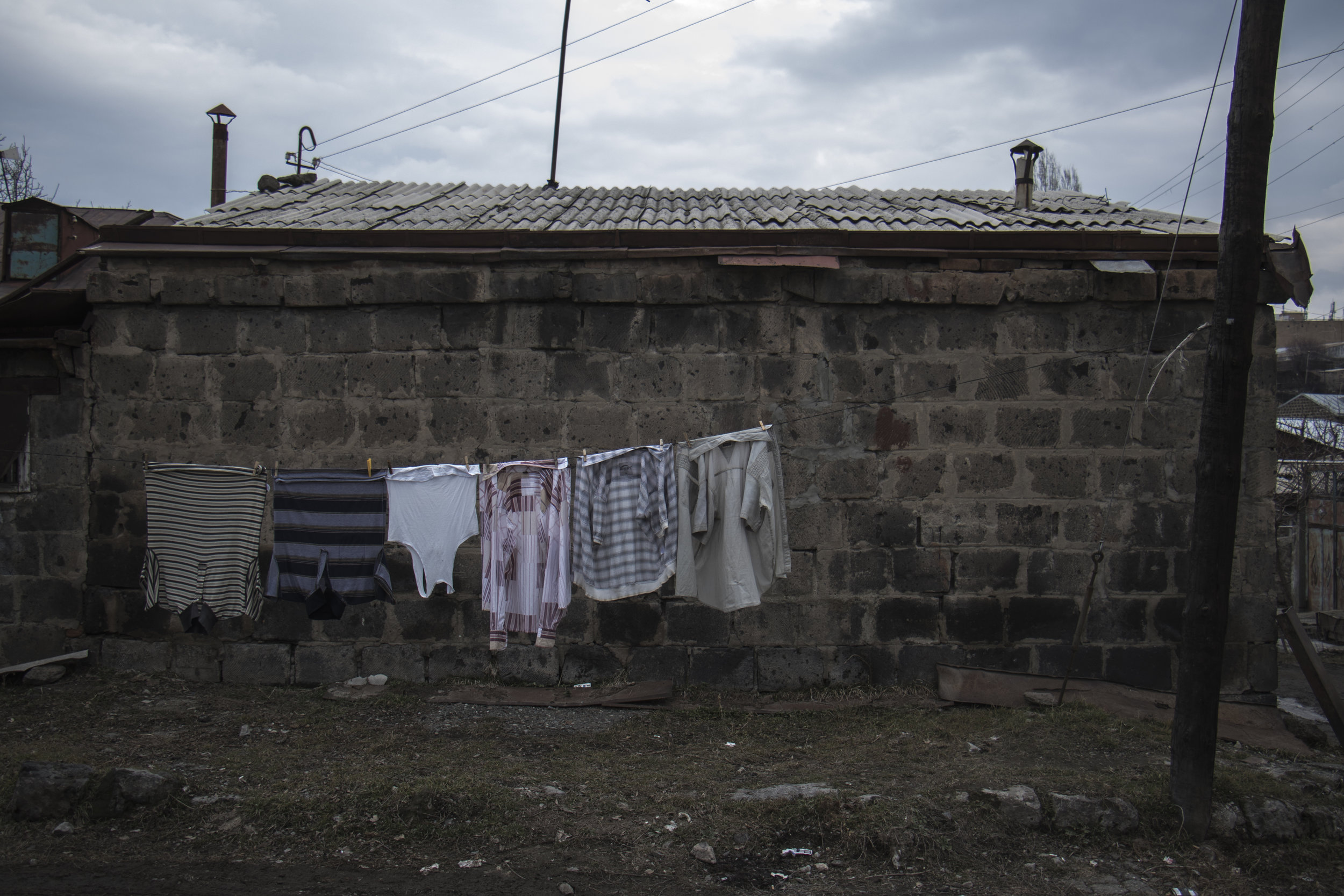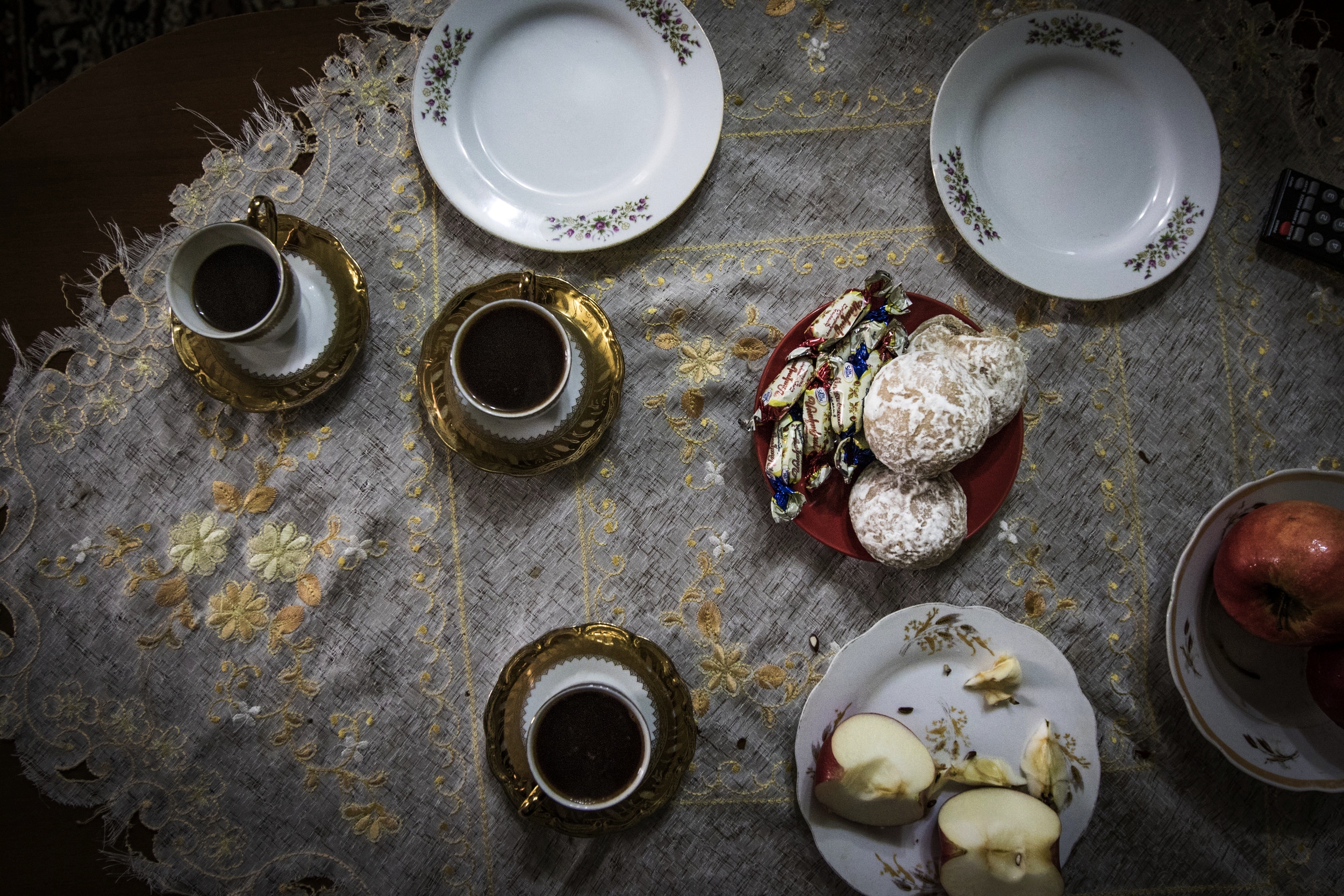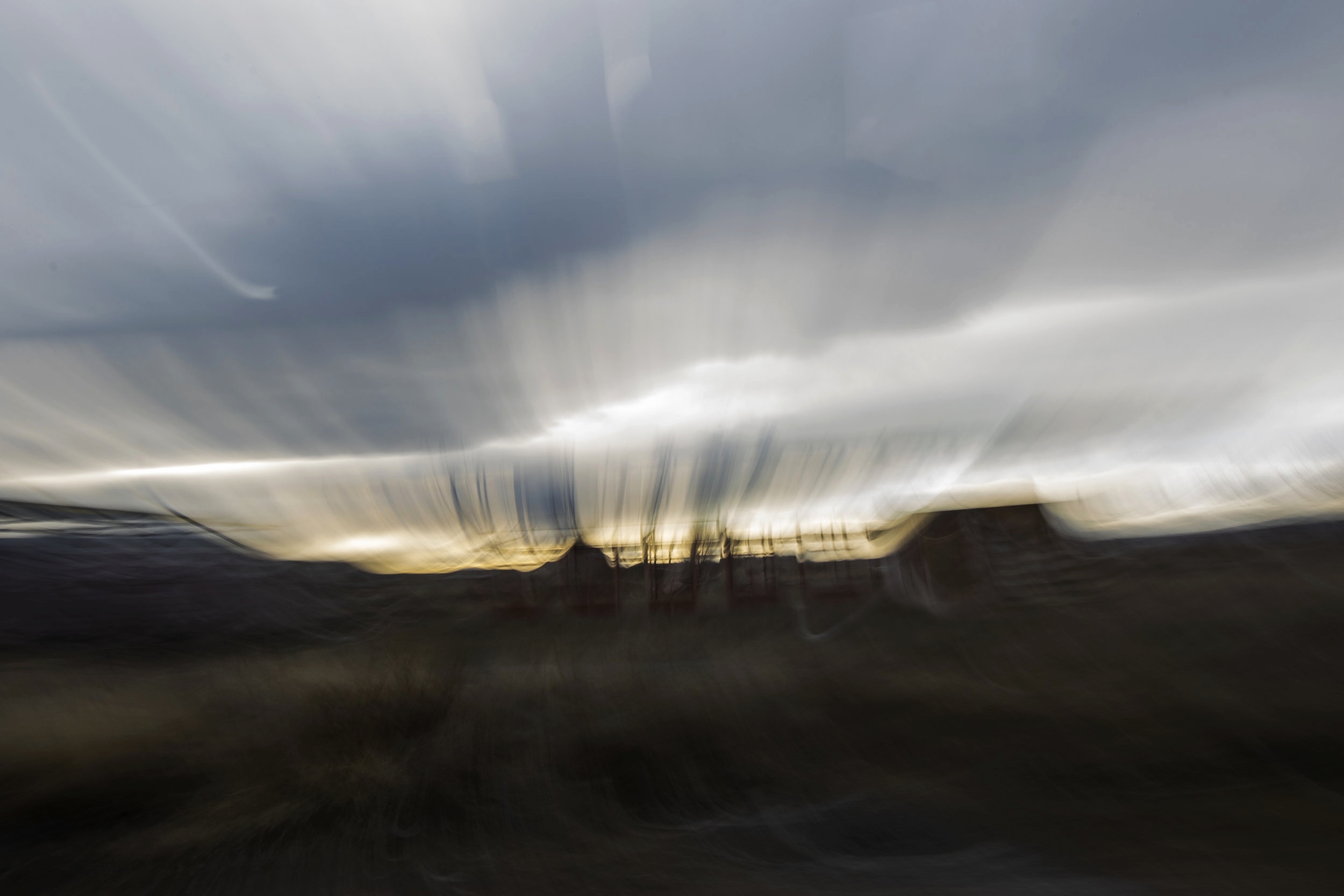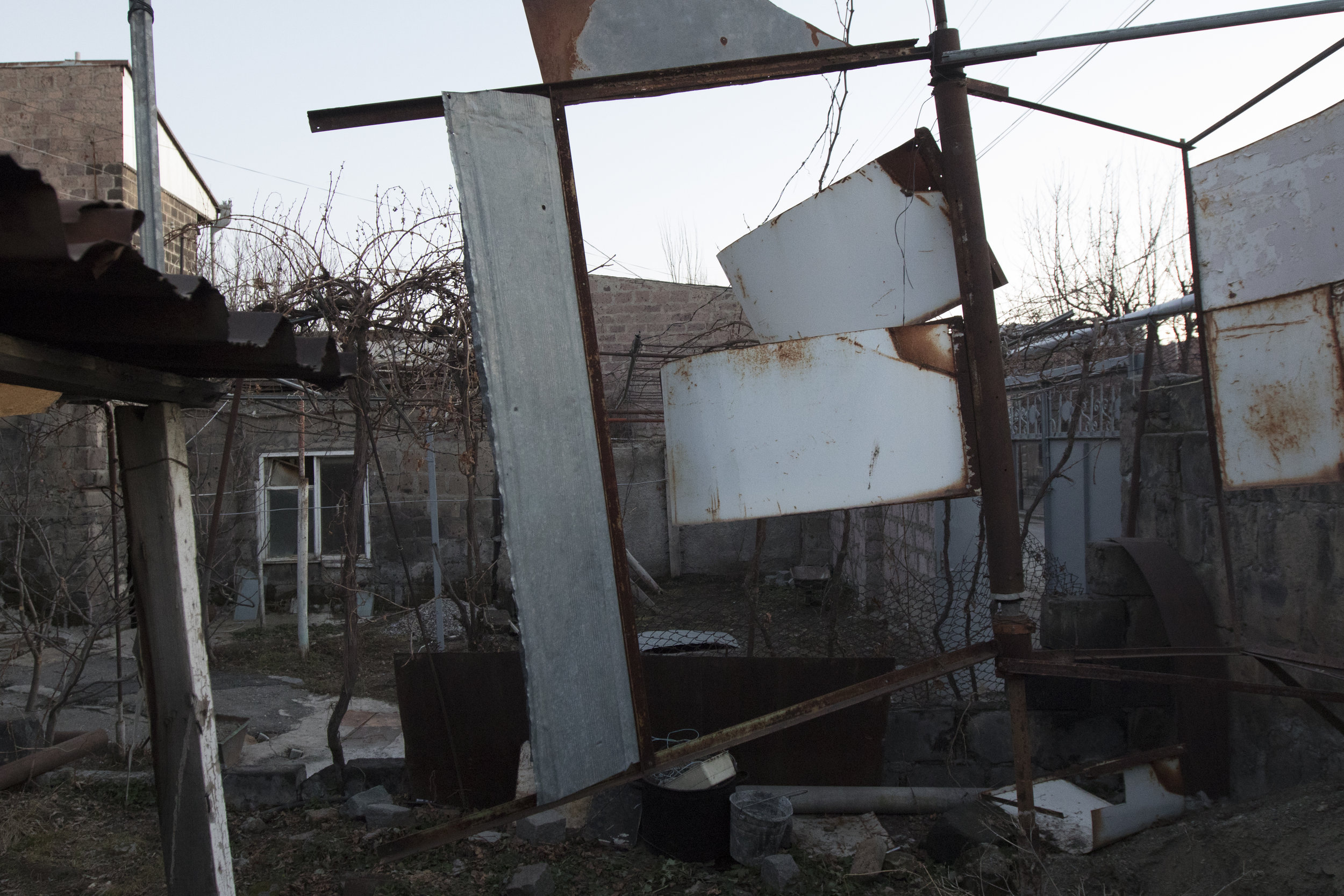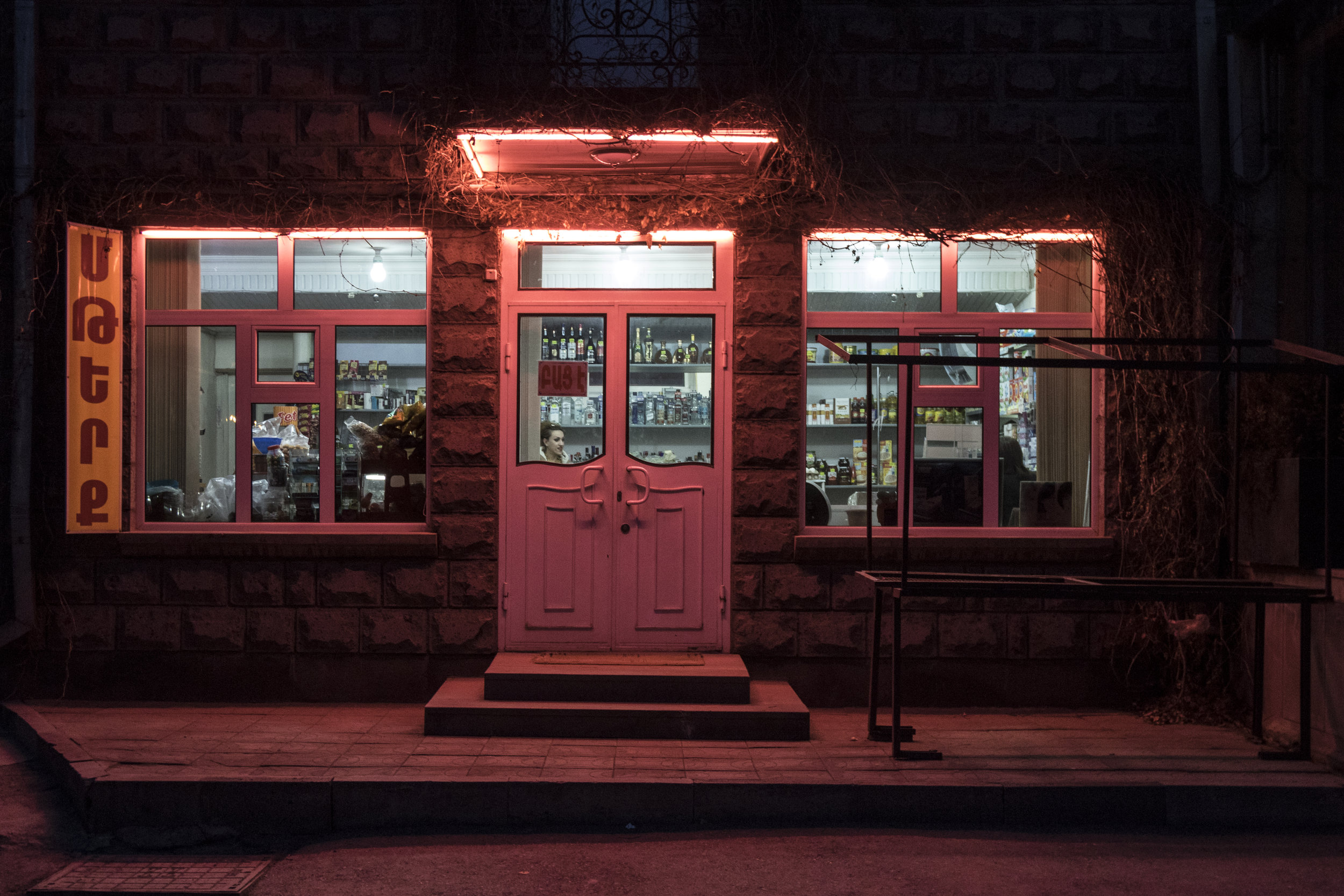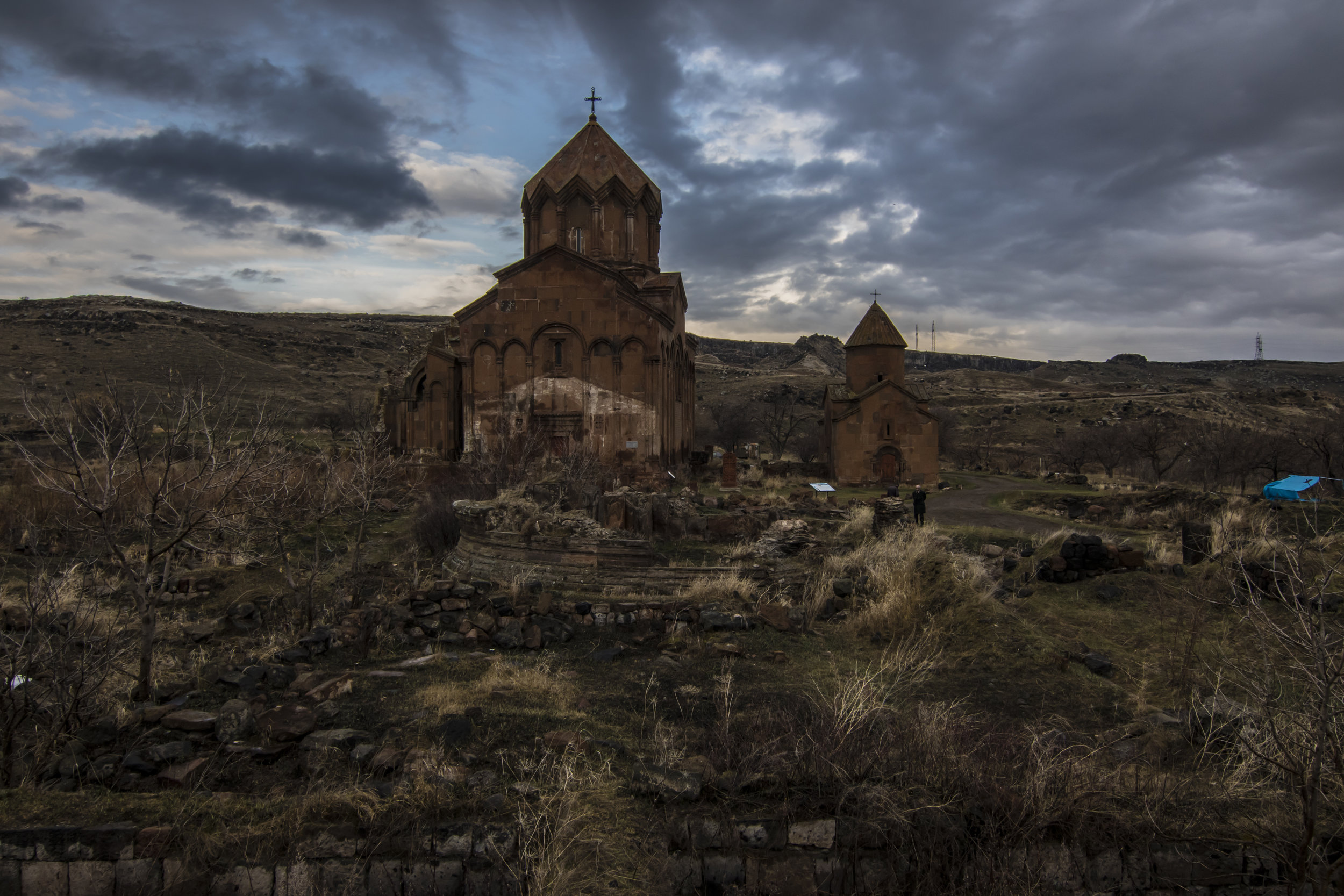Dusk in the small village of Ts’Oghamarg, about an hours drive outside of the city of Gyumri. This village is very close to the border that Armenia shares with Turkey.
Drying clothes can be found all over Gyumri. Hanging in peaceful stagnation, only moving from the occasional midday breeze.
A duo of clock and watch repairmen work in their small metal shop in the heart of Gyumri. For hours they toil with springs and gears, and make smalltalk with each other.
A trio of pigeons emerge from their metal coops outside a blacksmith’s shop in Gyumri.
A shoemaker’s wife shows me her bedroom, part of her small but elegant home in Gyumri. Rugs adorn the floor, chairs, and even walls. This is partly Armenian custom, and partly to cover unfixed water damage from the earthquake of 1988,
Front entrance to a house in the Domik regions of Gyumri. This area is populated by metal shells of houses, originally constructed after the earthquake as temporary shelter until other arrangements were made. They remain permanent housing for many people over twenty years later due to the government’s lack of economic stability after the fall of the Soviet Union.
The exterior of a Domik house in Gyumri. It is cheaper and more space efficient to only buy a washing machine, so many Armenians opt to let their clothes air-dry outside
A woman who lives in a Domik house kindly prepares coffee on the stove. Metal gas pipes crisscross the house and provide heat to the residents.
A man holds his grandson up to a window, looking out onto the newly constructed apartment complexes. These were constructed not long ago, for those seeking adequate housing after the Spitak earthquake of 1988, but despite these new developments, there are still thousands without homes.
Men and a small boy spending time together before dinner in a village outside of Gyumri.
A taxi driver talks to neighbors while waiting for his customer to come out of their house. Cars in Armenia are often older models, left behind by the Soviets after the Cold War.
Men in the Domiks play a game of Narde (nar-dee) outside. Narde is a popular game in the Caucuses, and akin to Backgammon.
A man herds cattle in the mountains outside of Gyumri, Armenia. He warned me not to get any closer, as they could charge at any moment.
Sunset landscape of the village of Ts’Oghamarg, and the surrounding area. Just past the mountain range that the sun is dipping behind is the border Armenia shares with Turkey. The two countries have had many conflicts over the years (most notably the Armenian Genocide of 1915-17). Animosity between the two countries continue to this day.
A mother cares for her newborn twin boys in a hospital in Gyumri. These boys happen have been born prematurely, and require constant attention from their mother. Only days after giving birth, the mother is up and active.
The typical interior of an Armenian home. Rugs line every piece of furniture, and elegant curtains with ornate patterns enclose the room.
A woman prepares lavash, a traditional Armenian flatbread, in a wood fired Tonir oven. The dough is slapped on the sides of the oven, and cooks quickly.
Metal debris left untouched, decades after the earthquake that wreaked havoc over Gyumri, and the rest of Armenia in 1988. Now it stands alone, acting as a large scale rusted fine art installation in someone’s backyard.
The city of Gyumri is illuminated at night by various neon lights of signs outside stores. They come in all kinds of colors, this one being pink, outside a convenience store.
A woman passionately prays in Yot-Verq, a famous Armenian Apostolic church in the center square of Gyumri. The name of this 19th Century church translates to “Our Lady of Seven Wounds, “ symbolic of the Virgin Mary’s seven sorrows in the Christian faith.
The 10th century Christian Marmashen Monastery stands mostly undamaged from the earthquake, near the Armenia-Turkey Border.
A woman prepares dinner in her kitchen in Gyumri. In the corner, to the right of the entryway, are many religious items, pictures, and crucifixes. Each religious home in Armenia has a section of their home dedicated to their religion.

